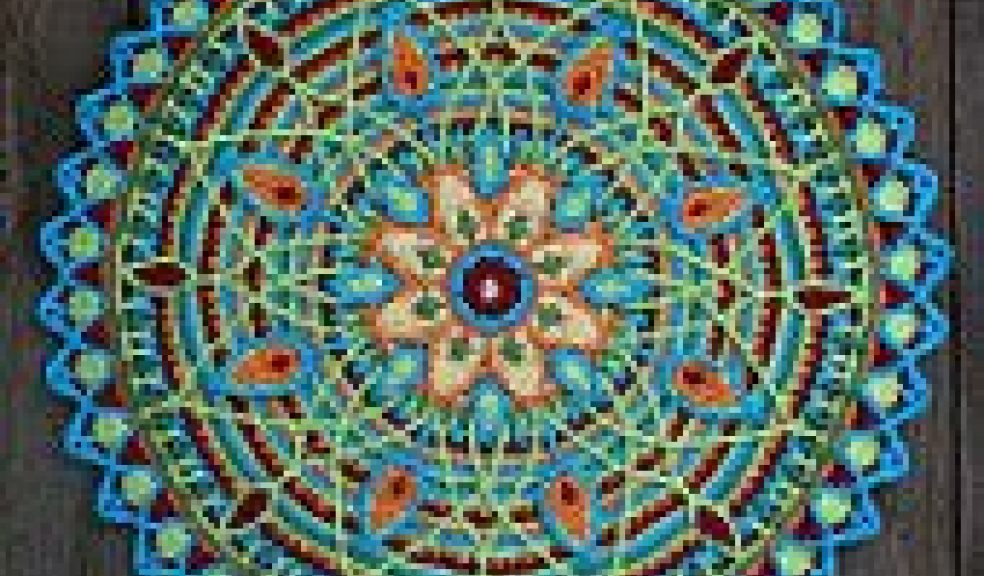
Knitting is the new yoga
Meditate on the word meditation and it is likely that certain images will come to mind. A Buddhist monk perhaps in saffron robes, or a lycra-clad young woman folded into the lotus position.
In the last couple of decades, meditation has risen from the realm of Eastern spiritual practice to emerge as a stress-busting antidote to modern life. Science has corroborated what Zen masters have known for years; that regular meditation helps people cope with stress, illness and chronic pain as well as promoting wellbeing and a host of other benefits. In fact, regular meditation practice is associated with improvements in attention, concentration, better cognitive function later in life, increased serotonin levels and a range of other psychological benefits.
A study carried out by Yale University, in the US, for instance, found that mindfulness meditation, which simply means awareness of the present moment, decreases activity in the part of the brain responsible for mind wandering. This is the part of the brain, known as the default mode network or ‘monkey mind’, that is often given to ruminating on unpleasant thoughts or experiences and worrying. Learning to quiet this can help free us from the cycle of negative thinking.
But while the research has been piling in to demonstrate the application of meditation to modern life, there is still something of an image problem. For many people, there remains an association with exotic religions, or the impossibly bendy among us, and therefore they believe meditation is not for them.
The good news is that there are paths into meditation practice that do not involve yoga mats or temples. Recent studies have shown that craft activities, such as knitting, can enable people to enter a meditative state.
In fact, the benefits of crafting are wide ranging. Betsan Corkhill, author of Knit for Health and Wellness; How to Knit a Flexible Mind and More, is one of the pioneers into research on the benefits of knitting and stitching.
In an online survey of 3,545 knitters, Betsan found a significant link between feelings of wellbeing and knitting. Those respondents who knitted more than three times a week were the happiest, reporting that they were calmer, happier, less sad, less anxious, and more confident. The study concluded, “Knitting has significant psychological and social benefits, which can contribute to wellbeing and quality of life.”
According to Betsan Corkhill’s paper: “The skills and feelings experienced whilst knitting and stitching can also be used to facilitate the learning of techniques, such as meditation. Using knitting to achieve a meditative state of mind could enable a much wider population to experience the benefits of meditation, as it doesn't entail having to understand, accept or engage in a prolonged learning period of the practice. It happens as a natural side effect of knitting.”
While Betsan’s study focussed on knitting, there is evidence to suggest that any crafting activities that involve a repetitive rhythm and concentration can enable a pathway into mindfulness. In fact, the benefits go much wider. As Betsan says on her website, Stitchlinks: “[They] learn other valuable life skills such as patience, perseverance, and the knowledge that mistakes can be undone. These skills can be utilised in the self management of health and illness, in education and the workplace. It teaches you that goals can be reached despite a few detours along the way and often the end goal is richer because of those diversions and lessons learned.”
Convinced of the benefits of both crafting and meditation, www.creativecontemplations.co.uk, based in Devon, is offering low-cost retreats and workshops in the South West, including Cheddar, focussing on mindful creativity. Founder, Karen Luckhurst, explained: “As a working mother of three, I know personally the calming role that creating with my hands has played over the years. The problem is that it is difficult to find the time and space to really sit and work quietly without any distractions.
“I believe that in order to tap into the meditative benefits of crafting, it is important to be able to do it consciously. I often find, however, that I am so anxious to get my crafting ‘fix’ that I do the opposite – mindlessly knitting in front of the TV or while waiting for the kettle to boil.
“I know that when I do consciously set aside time to work on a project, I enter a different state. I come out of my session feeling calmer and often with a much better perspective on everyday things. And, of course, the added bonus is that I have a scarf or cushion cover to show for it.
“There is also an advantage in working in quiet companionship with others. We get to be in company, but without some of the social pressures that can go with that. Sitting and crafting together peacefully creates a sense of shared experience that enhances the effect of what we are doing.”
Knitting and other handicrafts too aren’t without their image problems. Despite a rise in popularity and the increase in trendy patterns and boutique yarns and fabrics, many people still see crafting as basically uncool.
Betsan Corkhill has an answer for this. “The word 'knitting' has been the biggest barrier,” she writes on her website. “Everyone has their preconceptions about it. We urge you to look at it from a different perspective – that of a bilateral, rhythmic, psychosocial intervention which has the power to transform people's lives.”

















